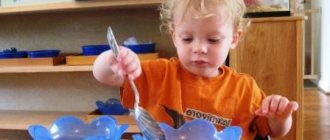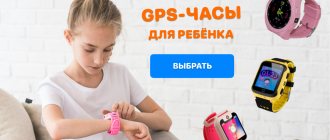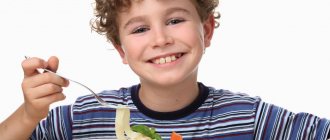Starting from birth, the child constantly develops and grows.
There are certain norms for each age.
Although they are conditional, pediatricians, speech therapists, psychologists, speech pathologists and other specialists monitor the correspondence of the baby’s development to his age.
What level should a child reach at 5 years old?
Features of the 5th year of life
By the age of 5, both boys and girls reach a level where they can be taught the most basic and important things in life. By this age, children begin to understand whether they like the chosen clothes or not, begin to form attitudes towards peers and adults, and accordingly, they develop their own views, opinions and worldviews.
REFERENCE! Both girls and boys at the age of 5 have, to a large extent, visual-figurative thinking.
So, what is the difference between the development of boys and girls at the age of 5?
Boy
At the age of 5, boys are ready to take responsibility for their affairs and actions.
Therefore, this is the best time to entrust him with some of the household chores.
Boys at this age tend to rebel and protest; punishments should be replaced by instructive conversations and explanations.
In addition, this is the best moment to allow your son to choose a sports or creative section.
At the age of 5, it is important for a boy to distinguish between male and female social characteristics, therefore the role of an adult male (father, older brother, grandfather, stepfather) plays an important role. It is he who must explain how a man should behave, what professions are suitable for a man, what qualities he should have.
A mother’s task is to surround her son with love, care and affection.
Girl
Girls are slightly different from 5-year-old boys.
While boys are more aggressive and hot-tempered, girls are characterized by strong impulsiveness, capriciousness and tearfulness.
They should also explain what a woman should be like, what qualities she should have, and this can be done through play or communication.
At this time, girls tend to imitate their idol, so parents need to carefully monitor who their daughter has made her ideal. You need to talk to the child about why she chose this particular character (or person), what is special about him and what qualities he has.
A 5-year-old girl can make one or several girlfriends, try to spend as much time with her as possible, and even be jealous of her other girlfriends. In order for the baby to avoid stress and stop being so jealous of the fact that her friend wants to play with someone else, you need to explain to her what personal space is.
At the age of five, it’s time to send a girl to a circle where she could develop her creative or physical abilities.
Compliments are of particular importance for a 5-year-old girl: parents and relatives should tell her as often as possible that she is beautiful, attractive, smart, that she is the best, and so on. A girl perceives compliments from her father or grandfather better than from her mother or grandmother.
Features of development of children 5 years old
This age refers to middle preschool. We can consider that the child is halfway to school. Consequently, certain achievements in the development of cognitive processes are already important.
From about 5 years of age, attention span begins to develop rapidly. Voluntariness is formed, allowing partial control of attention. Since attention is a special mental process that accompanies perception, memory, imagination and thinking, the development of these cognitive processes is enriched.
As for perception, five-year-olds distinguish all shades of the spectrum and identify parameters for the sizes of objects and figures. That is, they understand that there is length, width, thickness, depth. In middle preschool age, standard series are built that allow the child to recognize such characteristics as “less - more - even more” or “low - higher - even higher - the highest.”
Visual perception acquires such a feature as the sequence of viewing. Now the child’s gaze does not jump chaotically from one point to another, but moves in a more orderly manner. This is an important age-related acquisition that allows one to form more accurate images of objects.
The level of development of imagination allows 5-year-old children to include fairy-tale characters in the game. They can run away from the Serpent Gorynych, play the role of a Fairy with a magic wand. Imagination helps create detailed objects for story games. For example, children sit in a sandbox as if they were sitting in a car, someone is the driver. The girls “set” the table using leaves, twigs and other natural materials.
The child’s memory acquires the most important quality - indirectness. Children aged 5-6 years remember much more than younger preschoolers. At the same time, they rely on the similarity of objects, on pictures. The verbal-logical approach contributes even more to memorization. Thanks to the intensive development of speech at this age stage, the child independently establishes semantic connections between concepts, and thus learns better. This explains the desire of children to correct an adult who is telling his favorite fairy tale in his own words.
In five-year-old children, visual and imaginative thinking dominates. They no longer rely on actions, like kids, but on images and representations of objects. The formation of imaginative thinking is facilitated by the fact that at the age of 4-5, preschoolers actively imitate an adult and constantly model the relationships of the adult world in their games. Also at this age, a logical way of thinking begins to develop. The child notices, analyzes, compares a lot. The reasoning and questions of five-year plans are related to cognitive interests. To understand something, a preschooler asks a chain of clarifying questions.
What should you be able to do?
At 5 years old, a child should independently:
- wash your face and brush your teeth, knowing that this needs to be done morning and evening;
- take off your shoes and outerwear yourself after a walk;
- wash your hands after a walk and before eating and dry them with a towel;
- be able to use cutlery (including a knife);
- take a bath yourself.
In this case, the child can rub himself with a soapy washcloth and wash off the foam, but he cannot be left in the bathroom unattended.
What should you know?
At this age, you can begin to prepare your child for school. Knowledge that should be available to a 5-year-old child:
- Numbers from 1 to 10, as well as the ability to identify them in an image and count the number of objects up to 10;
- Operations of addition and subtraction by 1-2 units;
- Name and image of simple geometric shapes, drawing them;
- Many letters, the ability to write them and indicate the named letter among others;
- Reading by syllables (often, but not always);
- Solving simple logic problems and riddles;
- A collection of simple cubes, construction sets and puzzles;
- Ability to solve problems using the “eliminate the unnecessary” principle and explain the choice.
What children should be able to do at 5 years old
In middle preschool age, it is no longer difficult to diagnose what the child has learned and at what level the development of cognitive processes is. It is important for adults to remember that any test task must be presented to 5-year-old children in a playful way. Average indicators generalized on the basis of psychological research are taken as the norm.
Knowledge and skills of a cognitive nature
Awareness
1.Can tell about himself and his parents (name, surname, who they work for). Knows his address, the name of the city/town/village. Knows what country he lives in.
2. Distinguishes the seasons and names their signs. Lists all days of the week in the accepted sequence and almost all months.
3. Correctly determines the current time of day and navigates how the daily periods change (morning-afternoon-evening-night).
4. Correctly names many pairs of animals and their babies (dog - puppy, cow - calf, etc.)
5. Gives a description of all household items, popular plants (“a spoon is what they eat”, “a rose is a beautiful flower with thorns”, etc.).
6. Knowledgeable in basic professions (doctor, driver, teacher, salesman, builder, etc.)
7. Distinguishes the possible from the unreal. Correctly interprets fable pictures: “It doesn’t happen like that,” “This is wrong,” “Very funny.” Explains what should be shown in the picture.
Perception
1. Confidently identifies the following characteristics: color and shape. To check, ask your child to collect all the details of a triangular (square) shape, select or indicate objects of a certain color in the picture.
2. Demonstrates the perception of space - understands and uses in speech the words “left”, “right”, “in front”, “behind”, “opposite”, “next to”, etc.
3. Composes a picture from four parts, and does this using the method of visual correlation. Only in difficult cases (when an unknown object is depicted) does he resort to the trial method.
Memory
1. Invite your child to listen and remember the words. A child’s auditory memory is normal if he remembers and reproduces 6-7 out of 10 simple words.
2.Arrange five small items. Let the preschooler look at them carefully and then turn away. Swap two items. Visual memory corresponds to age standards if, after looking at a set of objects again, the child can restore the previous layout.
Thinking
1.Identifies the signs of each season and time of day.
2. From four specially selected images, excludes the unnecessary ones (for example, apple, pear, plum, cucumber) and explains why this object does not fit the group.
3.Names a generalizing concept for a group of words. Knows the concepts of vegetables, fruits, dishes, transport, furniture, food, clothing, domestic and wild animals, birds, flowers, etc.
4. Establishes logical connections between pairs of concepts by looking at the corresponding images on the cards. For example, a bird is a tree, mittens are skis, a hare is a carrot.
5. Finds similarities and differences between two similar images or real objects, noting significant features. (How are a table and a chair similar? How are they different?)
Speech development
1. Retells the content of a fairy tale or children's story he heard.
2. A 5-year-old child uses all parts of speech. To test his active vocabulary, show him a series of pictures connected by a single dynamic plot (5-6 pictures). After looking at it for two minutes, invite your child to make up a story based on the pictures. Pay attention to the presence of nouns, adjectives, verbs, adverbs, pronouns, conjunctions and prepositions in children's speech. In accordance with the standards, the listed parts of speech must be present.
3. Forms the plural form based on the singular and vice versa (chair - chairs, trees - tree).
Math skills
1.Knows all the numbers, can count from 1 to 9 and in reverse order.
2.Understands the quantitative relationship between more and less. Able to equalize the number of items in two sets by adding or removing items from the corresponding set.
3. Knows how to use ordinal numbers: first, second, third…
4.Knows basic geometric shapes: circle, square, triangle, rectangle.
Test
The child development test at 5 years old consists of 7 simple tasks. To carry it out, you must first prepare:
- Three separate images of different times of day (morning, evening, night);
- A picture with 10 or more separate objects that the child knows (ball, chair, sun, etc.);
- A picture with 3 circles of different colors;
- A picture with 3 objects known to the child (spoon, pen, telephone).
Tasks:
- Ask what time of year it is.
- Ask “why do birds fly?” or “why do you have to hold on to the handrail on the bus?” You can come up with your own simple question with a cause-and-effect relationship.
- Ask them to name round (square, triangular) shaped objects in the room.
- Lay out pictures of different times of day in front of the child and ask him to name them.
- Ask them to count them in a picture with 10 or more objects.
- In a picture with 3 circles, ask them to name their color.
- Ask to tell what each of the 3 items from the last picture is needed for.
Every correct answer o.
If there is one “—”, it is recommended to conduct the test for children aged 4 years. If there are one or more disadvantages, the child should be shown to a child psychologist.
Psychology
Psychologists call the 5-year-old age one of the easiest to educate and develop: the main crises are in the past or await in the future.
At 5 years old, the child already forms his own opinion, but is still able to compromise.
It’s easy to come to an agreement with him if you calmly explain to him why you need to do it this way and not otherwise.
REFERENCE! At the age of 5, children react sharply to criticism.
A 5-year-old child is very inquisitive, asks a lot of questions, wants to know everything and perceives every discovery with great joy.
In communication, children already identify those they like and those they don’t like. They are able to determine their own social circle, refuse friendships with unpleasant peers and adults.
One big disadvantage is the inability to express one’s emotions and thoughts in an adult way. Children tend to be rude and aggressive because they don’t know how to explain that they don’t like a phenomenon, thing or person. The parents' task is to teach him this.
Advice from Dr. Komarovsky
What does pediatrician E. O. Komarovsky recommend doing with uncontrollable children?
- React to hysterics calmly, with a smile, ignore if necessary. The child makes scandals in front of people who are sensitive to him. If you feel like you're ready to break down, go somewhere else. Family members must adhere to one line of behavior: the pattern “mom scolds, dad does nothing, grandma allows everything” will lead to spoiling.
- Don't follow the lead of others. Do people look at you with judgment because you don't let your child take a second candy bar from the store shelf? Wait until the hysteria stops without your intervention. If you give in, the child will begin to use this technique for manipulation, acting up in front of strangers. A minute of silent condemnation is better than hours of children's screams.
- It is necessary to master pedagogical subtleties not during a crisis, but much earlier. Is the child still crawling, just getting ready to take his first steps? Read about the upcoming crises of 3 and 5 years. Prepare for tests in advance.
- If tantrums occur for no reason, and the child is rarely in a calm state, consult a doctor.
- Adults may lose self-control: spanking, punishing, screaming. For repeated nervous breakdowns, parents should seek help from a family psychologist. Children are sensitive to the state of their elders; this behavior traumatizes them. The consequences will appear when the child grows up.
- There should be a cause-and-effect relationship in the actions: if you dropped a cookie, you’ll take a second one from the pack tomorrow. If you refuse the food offered, you will get it later. There is no need to instantly correct children’s mistakes, pick up objects from the floor, or force-feed them. Form responsibility for your actions from an early age.
- The important thing is the relationship between actions and time. “You misbehave in the morning, you’ll be left without cartoons in the evening!”, “If you cry, you won’t go to your birthday party this weekend!” - it is not right. By the end of the day, the child will have forgotten what happened. Report consequences immediately.
- Children are entirely dependent on your will. Don't compete with them. You do not have the right to ignore biological needs by limiting healthy food, walks, sleep, but as punishment you can prohibit “excesses”: sweets, buying toys.
Features of speech
A child of 5 years old is able to clearly formulate his thoughts using words. He knows how to operate with all parts of speech, construct sentences and pronounce them without hesitation.
- The child can clearly pronounce all sounds (an exception may be the sound “r”);
- uses words of all parts of speech in speech, including different declensions, tenses, verb inflections, plural and singular, superlative and comparative degrees of adjectives, etc.;
- knows how to give intonation to a sentence and determine that of the interlocutor;
- can read a poem with expression;
- knows and easily names the last, first and patronymic names of parents, teachers and his own;
- knows his exact address of residence (including region, city);
- knows and does not confuse the meanings of the words “yesterday”, “today”, “tomorrow”, knows the names of food products and dishes, and if he makes a mistake, he corrects himself.
Communication
During preschool age, interactions with peers are just as important to children as interactions with older children and family. By the age of 5, they have their first stable friendships. Children learn to perceive each other's desires, distinguish between moods and emotions. Each child, in the eyes of his friends, acquires individual characteristics and is remembered thanks to one striking feature (Vova loves to play with cars, Masha’s favorite food is cake).
Realizing himself as part of a children's team, the baby forms his self-esteem. It is influenced by both the number of friends and the quality of communication itself. Depending on the type of character, the child strives to be a leader in the group or takes the position of a follower. But every child needs to be noticed and accepted. Based on his position in the team, the future level of aspirations, active or passive position is laid down.
To help your child develop proper self-esteem, parents and other significant adults need to praise him more often, noting even minor successes. The higher the preschooler’s confidence, the easier it will be for him to cope with ever-increasing demands and subsequently master the school curriculum.
Fine motor skills
By this stage of development, the child’s fine motor skills should be well developed. So, the child should be able to:
- Hold a pencil (pen, brush) correctly and use it with the required pressure;
- Color the picture without going beyond the subject;
- Draw according to the pattern of the figure in the cells;
- Sculpt small parts from plasticine;
- Tie and untie shoelaces.
Games
For children at this age, play remains the leading activity, so it is necessary to frequently engage them in developmental games.
- Attention game “Clap and Stomp”. The parent invites the child to perform a certain action at the moment of pronouncing a word. For example, clap if he hears the name of a fruit. The presenter (adult) can pronounce any words: house, stairs, sky, apple, cucumber, computer, etc.
- A game to develop fine motor skills and mathematical abilities “Pick the peas.” You need to place a large vessel (cup, vase, pan) on the floor, and give the child a few peas (beans, buttons and other small items are also suitable). There should be exactly as many of them as the child can count, but not less than 10. The child stands next to the vessel, stretches out his hand and, calling out the serial number of the pea, throws it into the vessel. At the end of the game, you need to count how many peas were inside and how many fell past.
A child of 5 years old is already able to competently express his thoughts using words and sentences, express dissatisfaction with a particular event or person, but he is not yet able to express emotions. Only parents can help teach a child to control aggression, anger, hold back tears and overcome moodiness.
A little about friendship
This year contains the formation of deep and, as practice shows, fundamental concepts about friendship. Girls make friends. Due to personal characteristics, they can be several peers or one, but very close. Attachment to a friend associated with emotions can be very strong during this period, and the baby should be unobtrusively explained and helped to build personal boundaries. Many will wonder why this is necessary, because they are such great friends and want to be together, play and communicate. Yes, this is correct, but there are other situations. Parents often find that their girl is suffering because her best friend plays not only with her, but also with others. This phenomenon is very common, because all children have different upbringing and character.
To help your child, you need to talk to him as often as possible. You need to understand what offends your daughter in her relationship with her friend, what qualities you like in her. Fairytale therapy works great at this age. Do not be afraid of this word, therapy in translation means treatment, and treatment with a fairy tale is the best option for preschool children.
Parents should choose a suitable fairy tale (or better yet, more than one) on the topic of friendship. You need to get acquainted with it step by step. So, after reading the part, it is worth discussing it with the child: how he sees this situation, who is right and who is wrong. Often parents themselves compose such fairy tales, but it is important to avoid direct and overt allusions to the child’s real life situation.











